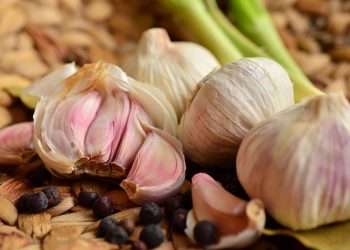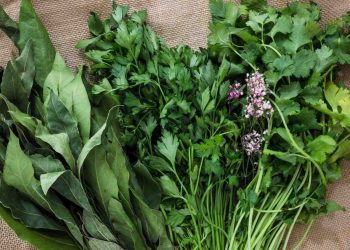Did you know that the tiny moringa leaf packs a nutritional punch that could rival some of the most celebrated superfoods? If you’re dealing with joint pain or inflammation, you might want to pay attention. Moringa, often referred to as the “drumstick tree” or “miracle tree,” has been used in traditional medicine for centuries, and recent research is starting to back up its benefits. Let’s dive into five natural remedies featuring moringa that could help you find some relief for those achy joints.
Contents
What Is Moringa?
Before we explore the remedies, let’s get a bit of background on moringa. The leaves of the moringa tree (Moringa oleifera) are rich in vitamins, minerals, and antioxidants. They’re known for having anti-inflammatory properties, which could be a game-changer for anyone suffering from joint issues. Moringa is often consumed in powder form, capsules, or as a tea, making it versatile for various culinary uses.
1. Moringa Leaf Tea
What’s the Deal?
Brewing moringa leaves into a tea is one of the simplest ways to incorporate this superfood into your routine. The warm liquid can be soothing, and it’s packed with anti-inflammatory compounds.
How to Make It:
- Ingredients: 1-2 teaspoons of dried moringa leaves, 1 cup of hot water, honey or lemon (optional).
- Instructions: Steep the leaves in hot water for about 5-10 minutes. Strain and enjoy! Add honey or lemon to taste.
Pros:
- Easy to make and drink.
- Provides hydration along with nutrients.
- Can be consumed daily without any significant side effects.
Cons:
- Some people might find the taste a bit earthy or bitter.
- Overconsumption can lead to digestive issues, so moderation is key.
2. Moringa Powder Smoothie
Blend It Up!
Adding moringa powder to your morning smoothie is another fantastic way to enjoy its benefits. The antioxidants in moringa can help reduce oxidative stress, which is often linked to joint pain.
How to Make It:
- Ingredients: 1 banana, 1 cup of spinach, 1 tablespoon of moringa powder, 1 cup of almond milk, and a handful of ice.
- Instructions: Blend everything until smooth.
Pros:
- Tasty and nutritious.
- Easy to customize with other fruits or vegetables.
- Provides a boost of energy, making it a great breakfast option.
Cons:
- If you’re not used to green smoothies, the taste may take some getting used to.
- Moringa powder can be a bit gritty if not blended thoroughly.
3. Moringa Oil Massage
A Soothing Touch
Using moringa oil for a massage can directly target painful joints. Moringa oil is known for its moisturizing properties and can help soothe inflammation when applied topically.
How to Use It:
- Warm a few drops of moringa oil in your hands and gently massage it into the affected joint area.
Pros:
- Provides immediate relief through massage.
- The oil is rich in oleic acid, which can help with skin hydration and may also penetrate deep into the skin to provide relief.
Cons:
- Some might find the consistency too greasy.
- Allergies or sensitivities to topical applications are possible, so a patch test is recommended.
4. Moringa and Turmeric Paste
Double Trouble for Inflammation
Combining moringa with turmeric can create a potent anti-inflammatory paste that may help reduce joint pain. Turmeric contains curcumin, known for its anti-inflammatory effects.
How to Make It:
- Ingredients: 1 tablespoon of moringa powder, 1 tablespoon of turmeric powder, water (to make a paste).
- Instructions: Mix the powders and add enough water to form a paste. Apply it to the sore joints and let it sit for about 20-30 minutes before rinsing off.
Pros:
- Both ingredients are powerful in fighting inflammation.
- Can be used as a natural remedy that’s easy to prepare at home.
Cons:
- The yellow stain from turmeric can be difficult to wash off.
- Some people might experience skin irritation, so a patch test is advisable.
5. Moringa Capsules
For On-the-Go Relief
If you’re not a fan of the taste or preparation involved with the previous remedies, moringa capsules are a convenient alternative. They offer a concentrated dose of the nutrients found in moringa leaves.
How to Use Them:
- Follow the dosage instructions on the packaging, usually 1-2 capsules per day.
Pros:
- Simple and easy to take.
- No taste or preparation needed.
Cons:
- Might not be as effective as fresh or powdered forms.
- Always check for quality and source to ensure you’re getting a pure product.
The Science Behind Moringa and Joint Health
So, what does the research say? While traditional uses are promising, scientific studies are starting to catch up. A study published in the Journal of Food Science and Technology (2016) found that moringa leaves possess significant anti-inflammatory properties, which could be beneficial for conditions like arthritis (Sreeramulu, et al., 2016).
Moreover, a review in the Journal of Ethnopharmacology (2017) highlighted moringa’s potential to mitigate oxidative stress, a key contributor to joint inflammation (Kumar, et al., 2017).
However, it’s essential to note that while preliminary findings are encouraging, more extensive clinical trials are necessary to fully understand the extent of moringa’s benefits for joint health.
FAQs
Q1: How much moringa should I take for joint relief?
A: Starting with 1-2 teaspoons of moringa powder or 1-2 capsules daily is generally recommended. However, consult with a healthcare provider for personalized advice.
Q2: Can I use moringa oil for cooking?
A: Yes, moringa oil is edible and can be used in cooking. It has a high smoke point, making it suitable for frying and sautéing.
Q3: Are there any side effects of moringa?
A: While moringa is generally safe, overconsumption can lead to digestive upset. Pregnant women should avoid moringa seeds, as they can induce labor.
Q4: How long does it take to see results from using moringa for joint pain?
A: Results can vary based on the individual and the severity of the condition. Some people may notice improvements within a few weeks, while others may take longer.
Conclusion
Incorporating moringa into your routine could be a promising way to manage joint pain naturally. Whether you prefer sipping on a warm cup of moringa tea, blending it into a smoothie, or massaging it onto your skin, there are numerous ways to benefit from this incredible plant.
That said, it’s essential to approach any natural remedy with a critical eye. Research is ongoing, and while results are promising, they don’t replace professional medical advice. Always consult with a healthcare provider before making significant changes to your health routine.
By blending these natural remedies into your life, you might just find the relief you’ve been searching for—without the side effects of traditional medications. Here’s to healthier joints and a more active lifestyle!
References
-
Kumar, V., & Gupta, S. (2017). Moringa oleifera: A review on its potential use in the treatment of various diseases. Journal of Ethnopharmacology. Retrieved from https://www.sciencedirect.com/science/article/pii/S0378874117304257
-
Sreeramulu, J., & Sreelakshmi, S. (2016). Anti-inflammatory activity of Moringa oleifera leaf extracts: A review. Journal of Food Science and Technology. Retrieved from https://link.springer.com/article/10.1007/s11483-016-1090-5
-
Mayo Clinic. (2023). Moringa: Health benefits and dietary uses. Retrieved from https://www.mayoclinic.org/drugs-supplements-moringa/art-20364867
-
National Institutes of Health. (2023). Moringa oleifera: A nutritional powerhouse. Retrieved from https://ods.od.nih.gov/factsheets/MoringaOleifera-HealthProfessional/
This article is for educational purposes only and is not a substitute for professional medical advice. Always consult a qualified healthcare provider before making changes to your health routine.
Get Your FREE Natural Health Guide!
Subscribe now and receive our exclusive ebook packed with natural health tips, practical wellness advice, and easy lifestyle changes — delivered straight to your inbox.














